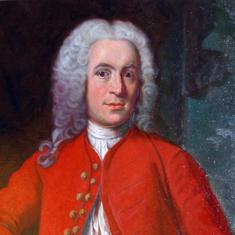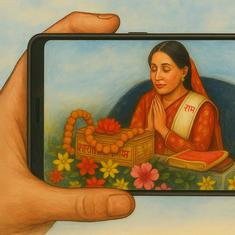When Priyanka Gandhi made her formal entry into politics in January by taking charge of eastern UP as the Congress Party general secretary, the excitement within and outside the media was palpable. Even as the ruling party tried hard to play it cool and even dismissive, the Opposition went into a celebratory frenzy. Gandhi was seen as the messiah who would reverse the Congress’s fortunes and was dubbed the “trump card”, “queen”, and even “Brahmastra”. Note the mythological reference in the last instance.
Such excessive political rhetoric, especially before an impending Lok Sabha elections, is hardly uncommon. The standard tropes are pulled out of the PR bag of tricks to sway public opinion. One such trick is the deification of political leaders, making them seem much, much larger than life – extreme examples being temples dedicated to Jayalalitha, MG Ramachandran, PM Modi and Sonia Gandhi. Although Priyanka Gandhi has just begun, it has started for her as well. A political banner spotted in Raebareli was effusive in its praise, calling her an avatar of Ma Durga.
Mythic narratives of power
It might all seem gimmicky and even funny to the discerning reader, but this relationship between political and religious power is nothing new. This Priyanka-Durga metaphor can be perfectly explained in the concluding remarks of a new book, Nine Nights of the Goddess: The Navaratri Festival in South Asia. Hillary Rodrigues, Professor of Religious Studies, University of Lethbridge, Canada and one of the anthology’s editors writes, “Just as Ram Rajya has been an effective clarion call for political action (mandir, anyone?), sweeping particular groups into governing roles, the Devi’s persona through the rites of Navaratri may work similarly.”
We’re watching it being done already. It’s as if the Congress was raising its Indira-esque Durga to BJP’s hypermasculine Rama and Hanumana. In fact, the myth involving Lord Rama and the goddess Durga, which forms the basis of Navaratri celebrations in South Asia, makes an interesting inversion of the political narrative. In this Shakta story, Rama is relegated to a subordinate position before an all-powerful goddess. He must invoke her at an untimely period to grant him blessings and powers to defeat the mighty Ravana.
If this seems too far-fetched a parallel, consider just the Durga-Mahishasura story. As Rodrigues goes on to say, “There are ample examples of political leaders being compared to the Devi...and political opponents, rival religions, and so on have often been equated with Mahisha, the demon in the Goddess’ best-known mythic conquest.”
Demonising the other is a common human tendency, although it isn’t politically correct to do so anymore. The Mahishasura Puja is a recently talked-about phenomenon, where some Asura tribal groups from Jharkhand and West Bengal, revere the figure traditionally seen as Durga’s nemesis, during Navaratri. While there is passing mention of this “alternative tradition” in the book, it is dedicated to understanding the “main traditions” celebrating the great goddess, but also understanding the personal as political.
Variously known as “Navaratri”, “Dussehra”, “Dasara”, “Durga Puja”, and “Dasain”, this is arguably among the greatest festivals of India. It is definitely one of the longest running, with celebrations spanning 9-10 days, which vary vastly from one state to another. This comprehensive anthology accounts for many of these traditions seen across India and beyond, in Nepal.
Divided into four sections – “Navaratri in the Court”, “Navaratri on Display”, “Navaratri Inside”, and “Navaratri at Home”, the 15 essays in this book explore the different levels and ways in which the festival manifests. The book is a consolidation of various white papers of a research group called “Navaratri, Navaratra, and Durgapuja in South Asia and Beyond”, which is a collaboration between the University of Oslo and the University of Texas-Austin, under the mentorship of Ute Hüsken. The anthology’s editors, besides Hillary Rodrigues, are Moumita Sen and Caleb Simmons. Section-wise, the essays follow a public to personal trajectory in charting the history and evolution of the festival.
Public worship
The first section establishes the textual and historical bases for the fact that Navratri was initially the festival of the royalty. The kingly tradition finds justification through the solar myths and the Devi Mahatmya found in the Markandeya Purana, Raj Balkaran postulates in the first essay. How Rama being the king who first performed the ritual becomes the basis of similar kingly conduct in the courts of Kathmandu, Mysuru, and Bonaigarh (a former princely state in present-day Odisha) is explained in the other essays the section.
The goddess as the supreme sovereign and the king as the chief patron of this festival united the sources of religious and state power. This section also explains how the essentially Puranic Hindu “template” of Durga came to be overlaid with many indigenous goddesses, who were all eventually identified with her.
As India transitioned into a free and democratic nation, power moved out from the hands of rulers. But the organisation and patronising of this festival by political leaders – even if elected – only affirms the old, underlying sociological premise. The essays in the second section elucidate the many public displays of the goddess that translate into shows of power.
Whether in the famously elaborate Durga Puja pandals of West Bengal, the Ram Lila of Benaras or the temples of Tamil Nadu, the festival becomes the ground on which many shifting paradigms of power are played out. “Both the Durga Puja and the Durga murti have acquired a multidimensional polyvalence,” writes Moumita Sen in her essay on the Durga Puja of West Bengal. She rightfully asserts that art, politics, popular religiosity, and marketing all culminate in the private/public affair that is the Durga Puja.
In the temple town of Kanchipuram, religious rivalry between Vaishnavism and Shaktism/Shaivism turns into a gentle complementarity as the rituals dedicated to Lakshmi mimic those of devi Kamakshi. Whether the priests do it or the politicians, the leitmotif of social power through religious power is evident.
Worship in private
The third section, comprising just two essays, focuses on the other side of the spectrum, where the worship of the goddess is a private affair. These describe the worship of Durga within a traditional Bengali household, with a somewhat zamindari flavour and the prescriptions for ascetics in an ashram in Benaras. The idea of establishing a personal connection with the divine feminine is explored here, and is reiterative of the spiritual purpose of religions.
The final section on “Navratri at Home” elaborates the materiality and domestic ritual aspects of the festival. In southern India, in particular, it is most visible in the kolu tradition, where women display dolls on tiered platforms and perform many rituals around it. The authors in this section explore the historical and temporal contexts of these practices, and how they are shaped by pan-Hindu considerations.
As one reads about how the divine feminine is worshipped as clay pots, as dolls, as swords, as saplings, as living young girls, as married women, as holy chants, or as beautiful vigrahas, the diversity of religious expression becomes apparent. That all things in this book talk ultimately about one god(dess) and one festival tells us that it is yet possible to find a central theme of life affirmation despite the mind boggling variations. It shouldn’t, then, be hard to remind ourselves that religion and its festive manifestations are just that – a celebration of life – no matter which part of the world they are from.

Nine Nights of the Goddess: The Navaratri Festival in South Asia, edited by Caleb Simmons, Moumita Sen, Hillary Rodrigues, Aleph Book Company.










